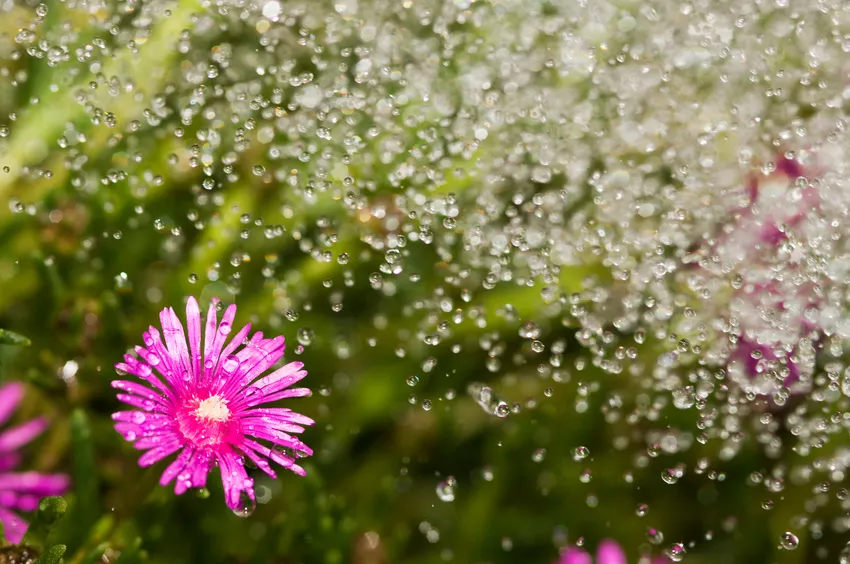- Recognize and combat aster wilt
- Identify and treat powdery mildew
- Common causes of disease in asters
Which perennial lover doesn't have at least one aster in his garden? These hard-working flowering perennials simply look great. But asters do not always look powerful, colorful and healthy. Sometimes they are afflicted by diseases…
 If the aster - especially the leaves - is too wet, it is more susceptible to diseases
If the aster - especially the leaves - is too wet, it is more susceptible to diseases
Recognize and combat aster wilt
The leaves of the aster hang limp. As if they were suffering from drought. But the earth is not dry. On the contrary, it is actually quite wet. The cause behind the limp leaves is probably aster wilt.
This disease often occurs in cushion asters. The leaves soon turn brown to black before eventually dying off. In the long term, the plant cannot be helped. So that it cannot infest other asters, it should be disposed of as soon as possible.
At the site where the aster wilt occurred, you should not plant asters for a few years. The fungal pathogens overwinter in the soil and can infest newly planted or sown asters again. Therefore, choose a new location for your asters!
Identify and treat powdery mildew
A second disease that occurs more frequently in asters is powdery mildew. The plant is most at risk of being attacked by powdery mildew if its leaves are constantly wet. Infested parts should be cut off and disposed of with household waste rather than compost.
This is how you recognize the disease:
- white to gray spots on the upper side of the leaf
- later: farinaceous coating on the leaves
- shoots and buds can also be affected
- finally, the affected parts of the plant turn brown
- leaves fall off
- Flowers don't open
- the entire plant withers
Common causes of disease in asters
In most cases, care errors are behind the diseases. An unsuitable location and too infrequent division can also be reasons. Here's how to prevent illness:
- strengthen with field horsetail stock, garlic stock, nettle stock etc
- do not water the leaves
- Do not measure the planting distance too small (at least 30 cm)
- choose hardy varieties
tips
For the sake of the environment and your wallet, refrain from treating with chemical fungicides. Strengthen your asters and optimize care so that these diseases do not appear in the first place.